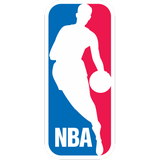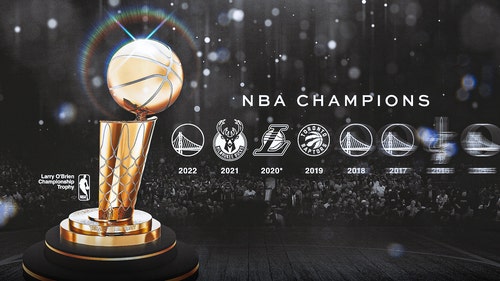
Brooklyn Nets coach Steve Nash uses 'connectivity' to lead NBA title favorites
By Yaron Weitzman
FOX Sports NBA Writer
Dan D’Antoni has coached basketball for 50 years.
He spent 30 at a single high school before working for his brother, Mike, in the NBA. Today Dan is the head coach at Marshall. In his office, he has rows of pictures hanging on the white wall behind his desk, all from different stops in his coaching career.
Among his favorites is a photo of him alongside current Brooklyn Nets coach Steve Nash. It captures both men laughing. Nash’s right arm is draped around D’Antoni’s neck.
The picture was taken during D’Antoni’s time in Phoenix, when he was part of a team that, led by Nash’s blazing brilliance, revolutionized the NBA. The picture captures just a single moment, but to D’Antoni, it represents one of Nash’s most important traits.
"I’m a high school coach, and he’s got his arm around me and is willing to treat me like I have something that can help him," D’Antoni said in a phone interview with FOX Sports. "He treats everybody like they have value, from the superstars to the last guys on the bench to guys like me. It creates connections. That’s the thing those Phoenix teams had."
About 15 years have passed since that picture. And while Nash’s position in the NBA has changed, the basketball characteristics he values remain the same. It’s why, despite his having no previous coaching experience other than some sporadic work with the Golden State Warriors, the Nets lured Nash out of retirement last September to be their head coach.
With Kyrie Irving and Kevin Durant on the roster, the Nets knew they had the talent to win a title. What they needed, general manager Sean Marks recognized, was a coach who could manage that talent, and be confident in himself, and command respect, and reduce drama, and work with his stars while at the same time empowering the other 13 players on the roster.

Per his usual custom, Nets coach Steve Nash greets his players as they walk off the court in a recent game. (Photo by Nathaniel S. Butler/NBAE via Getty Images)
"I wasn’t hired to come in and be a tactical wizard," Nash said on J.J. Redick's podcast in September. So what was he hired to do? "The job," he told Redick, "is about connectivity."
Pay attention enough, and you’ll hear Nash use this word often. Wins derive from it. Losses are caused by a lack of it. Roster shakeups make finding it even more crucial.
"We value competitiveness and connectivity," Nash told reporters in December during his first training camp.
"My message was personal pride, connectivity and coming together," Nash said following a disappointing February defeat to the Detroit Pistons.
"Basketball is about playing together and being the best you can be. No matter who you are, it's about finding that connectivity," Nash said in January after the Nets acquired James Harden from the Houston Rockets.
On the surface, this sounds like the sort of canned line that at best is a cliché and at worst reveals to the public that a rookie coach is unfit for his new gig. Schemes, after all, win basketball games, not players sitting in a circle, holding hands and singing Kumbaya.
But this Nets team is unlike any the NBA has ever seen. It also just went through a season unlike any in league history. Put it all together — 38 starting lineups in 72 games, mysterious leg injuries for Durant, mysterious absences for Irving, gutting the roster to get Harden, signing LaMarcus Aldridge, only to see him retire two weeks later, all occurring during a condensed season filled with strange health protocols and limited practice time — and you create a situation that’s not just combustible but also more like a tinderbox soaked in gasoline hovering above a bed of matches.
Yet here the Nets are, up 1-0 on the Milwaukee Bucks in the second round of the playoffs and clear betting favorites to win it all. Nobody would label Nash the primary reason for this success. But his belief in the importance of connectivity, his insistence in finding it — and what this priority says about him — certainly seems like the fire blanket keeping the entire thing from igniting.
For more up-to-date news on all things NBA, click here to register for alerts on the FOX Sports app!
"He's handled it all great," Nets reserve Landry Shamet said during a recent media conference. "Coming into a team with these kinds of expectations and the scope that's been on us, it couldn’t have been easy. I know it wasn't. But he always preaches about the connectivity and staying together and building, and he embodies it."
That connectivity has manifested itself in different ways. One is how the team's role players, such as Shamet, Nic Claxton, Bruce Brown and Jeff Green, have thrived despite their roles constantly evolving. Sure, they've benefitted by playing alongside a triumvirate of stars who suck up most of the opponent’s attention. But Nash has put in work building them up, too, whether it’s suiting up for runs with the team’s end-of-bench and rehabbing players or checking in via text.
"He makes sure we're good," Shamet said. "He talks about things outside of basketball and talks about basketball."
At the same time, Nash has seemingly figured out how to be both demanding of and accommodating to his stars. "Regardless of who it is, he lets us know where we could do better, and he's been an open book," Durant said after the Nets eliminated the Boston Celtics in the first round. He offered an example: "If we want to change a play or action, [he’s] always open for it."
Nash is calm on the sideline. He doesn’t yell. He doesn’t scream. He doesn’t leap up and down and flap his arms. "And I don’t care how big of an ego you’ve got — all players want that calmness around them so that they can focus on the game and not the drama," said D’Antoni, whose brother is now a lead assistant for Nash on the Nets. "Steve doesn’t get ruffled or do any of that stuff."
He also has leaned on the help of his high-priced assistants, such as Mike D’Antoni and Jacque Vaughn, another former head coach who led the Nets on the interim basis during last season’s bubble and was in the running for the permanent job before losing out to Nash, a situation that could have caused strife but that Nash diffused. D’Antoni’s imprint, in particular, is all over this Nets team; former Rockets staffers say a majority of the Nets’ offensive actions are straight out of the playbook D’Antoni used during his four seasons as Harden’s head coach with the Rockets.
But to some of Nash’s oldest friends, such as former Hawks head coach Lloyd Pierce, who played college ball with Nash at Santa Clara and has remained close with him since, what stands out most about Nash’s approach as a coach is how he’s utilizing some of the same leadership techniques he employed as a player.
"He was always the first guy to meet everyone when players were coming off the court," Pierce told FOX Sports in a phone interview. "I see him doing the same thing now, always the first guy out after timeouts."
You can picture what Pierce is describing: Nash, draped in his baggy warm-ups, bobbing and hopping around the sideline, offering high-fives and fist bumps to anyone wearing the same color uniform. He did so because he believed this fostered connectivity and that connectivity fostered winning.
Was he right?
In 2011, three researchers at the University of California, Berkeley took a look at whether there was any correlation between teammates’ physical interaction and wins. Their study, based on broadcast reviews of the 2008-09 season, claimed that teams whose players touched one another more often were more likely to win.
Around the same time, the Suns tasked an intern with tracking how many times Nash doled out high-fives, first bumps and butt slaps in a single game. The answer was 239. The researchers also discovered that in 2006, Nash led the NBA in total high-fives, first bumps and butt slaps. He won his second straight MVP that season. The Suns made it to the conference finals.
"That's connectivity," Pierce said. "It worked then, and it's working now."
Yaron Weitzman is an NBA writer for FOX Sports and the author of Tanking to the Top: The Philadelphia 76ers and the Most Audacious Process in the History of Professional Sports. Follow him on Twitter @YaronWeitzman.









